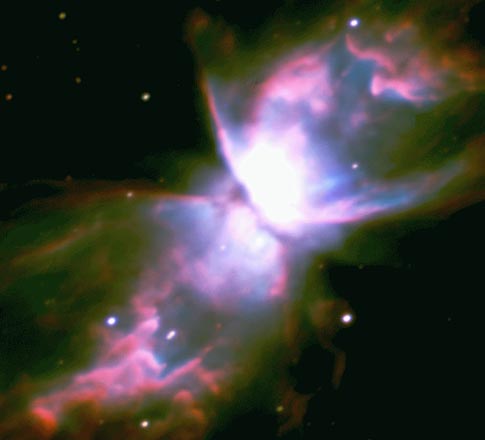Credit & Copyright: Very Large Telescope,
ESO
Explanation:
The Butterfly Nebula
is only thousands of years old.
As a central star of a
binary system aged,
it threw off its outer envelopes of gas in a strong stellar wind. The remaining stellar core
is so hot it ionizes the previously ejected gas,
causing it to glow.
The different colors of this
planetary nebula are determined by small
differences in its composition.
This
bipolar nebula
will continue to shine brightly for only a
few thousand more years, after which its central star
will fade and become a
white dwarf star. The above picture is one of the
first ever taken by the Very Large Telescope (VLT),
a new 8.2-meter telescope located in
Chile.
1999 2000 2001 2002 2003 2004 2005 2006 2007 2008 2009 2010 2011 2012 2013 2014 2015 2016 2017 2018 2019 2020 2021 2022 2023 2024 2025 |
Январь Февраль Март Апрель Май Июнь Июль Август Сентябрь Октябрь Ноябрь Декабрь |
NASA Web Site Statements, Warnings, and Disclaimers
NASA Official: Jay Norris. Specific rights apply.
A service of: LHEA at NASA / GSFC
& Michigan Tech. U.
|
Публикации с ключевыми словами:
bipolar - planetary nebula - butterfly nebula - звездный ветер - белый карлик - Планетарная туманность
Публикации со словами: bipolar - planetary nebula - butterfly nebula - звездный ветер - белый карлик - Планетарная туманность | |
См. также:
Все публикации на ту же тему >> | |
